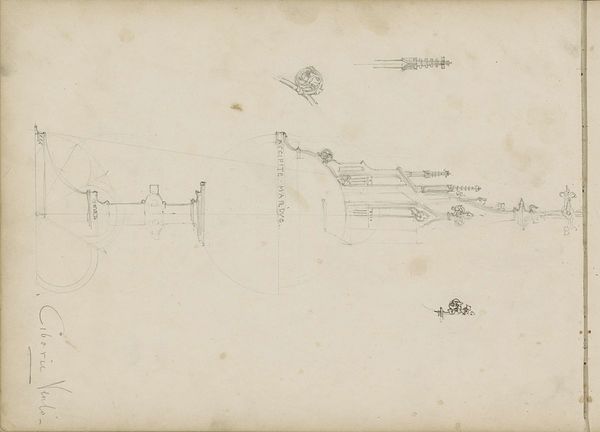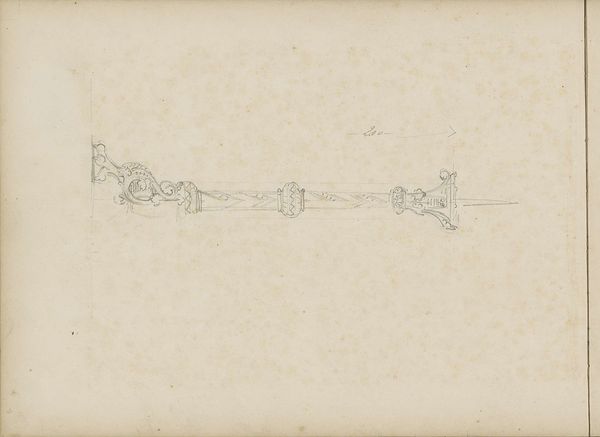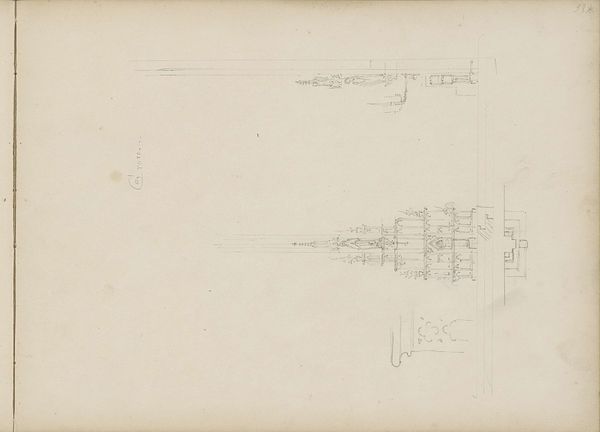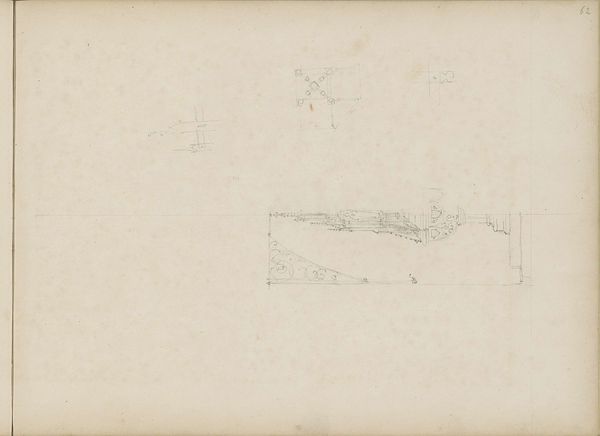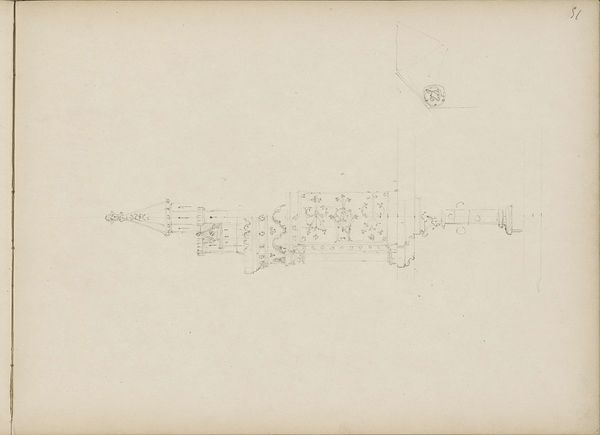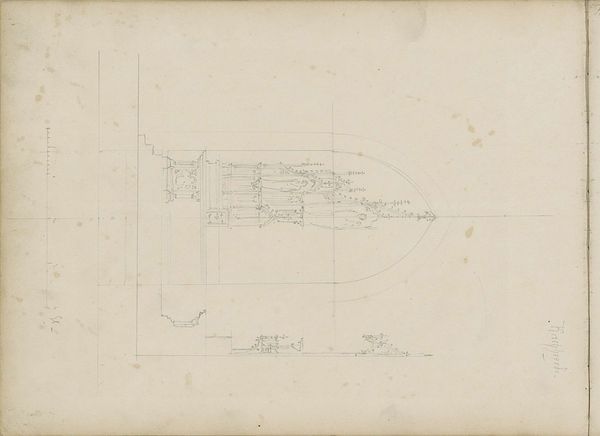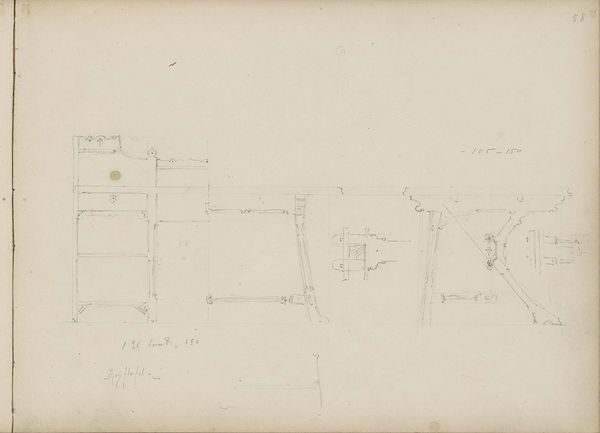
drawing, paper, pencil
#
drawing
#
pencil sketch
#
paper
#
geometric
#
pencil
#
line
#
academic-art
Copyright: Rijks Museum: Open Domain
Curator: At first glance, the delicate pencil work evokes a sense of ephemeral beauty, like architectural dreams sketched on parchment. Editor: Indeed. Let’s delve into the socio-historical dimensions of these airy “Baldakijnen.” Rendered by Pierre Joseph Hubert Cuypers between 1857 and 1859, these drawings on paper represent preliminary studies for church canopies. Consider the religious and political undertones: how does Cuypers' work engage with questions of faith, authority, and identity during a period marked by rising national consciousness? Curator: Beyond the symbolism, observe the deliberate composition. The precise linework constructs intricate geometric forms, calling our attention to symmetry, proportion, and balance. Do you not see echoes of the classical orders subtly integrated into these sketches? It is very ordered. Editor: But within that order, consider how the canopies provided an intimate space, and examine the visual and symbolic function within religious institutions of the period. Cuypers, later becoming the foremost architect of neo-Gothic churches in the Netherlands, here is deeply entrenched in shaping notions of religious belonging in his contemporary social context. Curator: Yes, and as pure visual elements, each form serves a particular function in organizing and structuring the overall design. The play of light and shadow gives the otherwise minimal shapes an almost spatial quality, adding a touch of depth. Editor: These designs reflect the prevalent architectural and religious tastes and ideologies of his time. This work provides insight into the construction of religious identity during the nineteenth century and how Cuypers molded cultural beliefs through space and form. Curator: What I appreciate is Cuypers’ handling of line and tone, which speaks to both technical mastery and an aesthetic inclination towards lightness and refinement. Editor: Precisely. A reminder that every formal decision embodies a social or historical consideration. The drawing acts as both aesthetic object and historical record. Curator: I find my appreciation deepened from understanding how formal elements serve symbolic and expressive ends. Editor: And how important these seemingly delicate pencil lines once were in shaping identity, religion and power structures of their time.
Comments
No comments
Be the first to comment and join the conversation on the ultimate creative platform.
